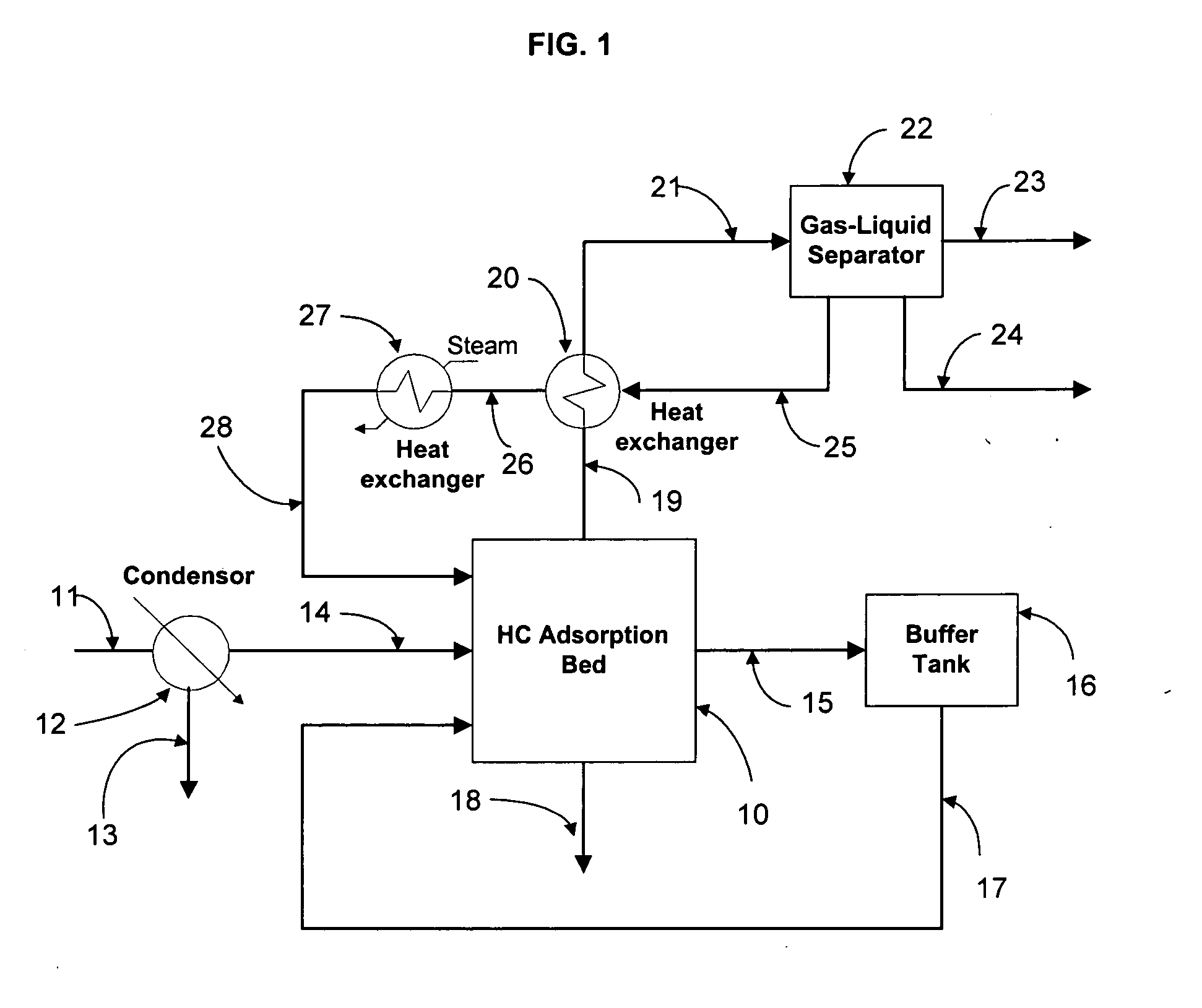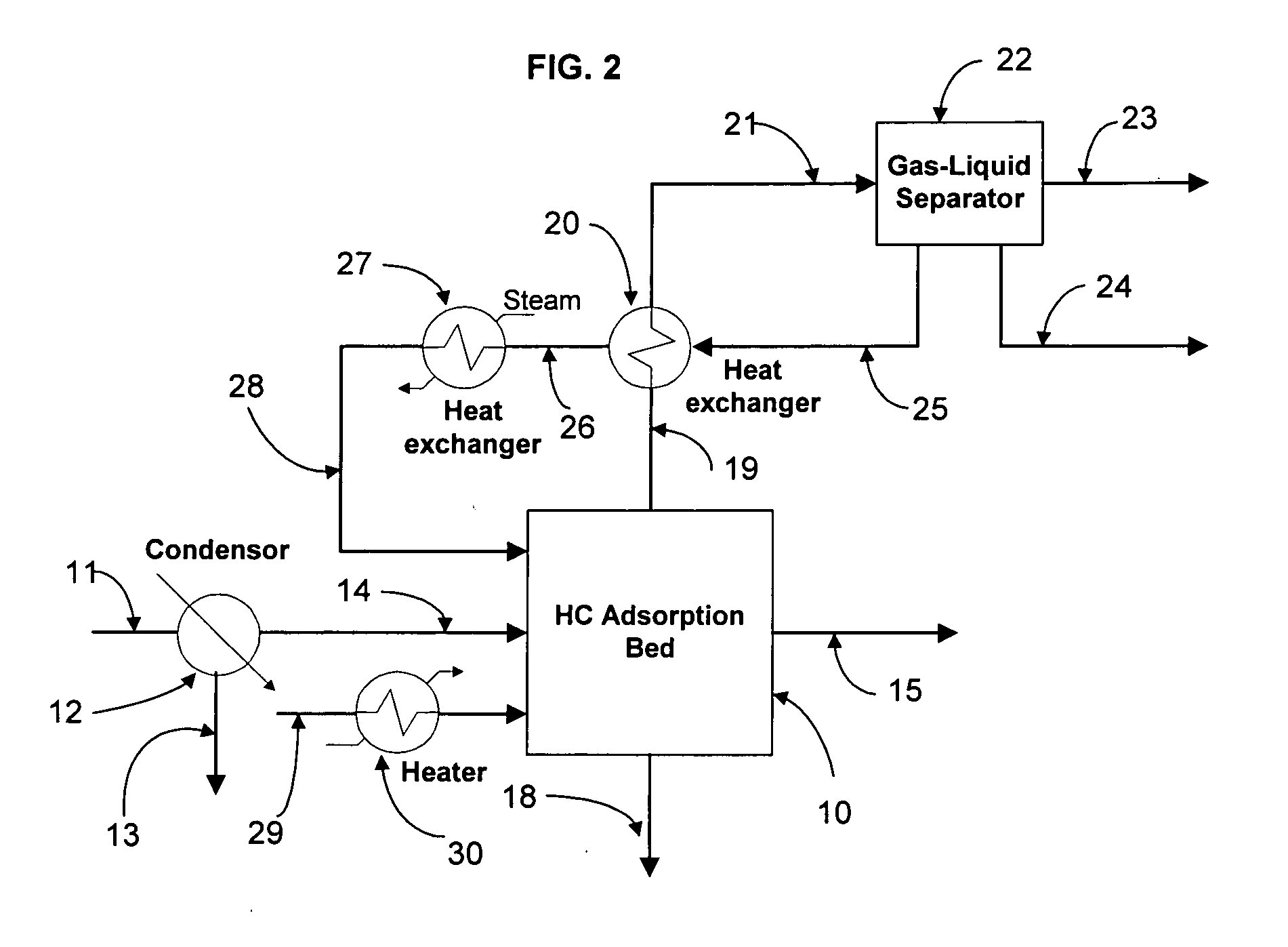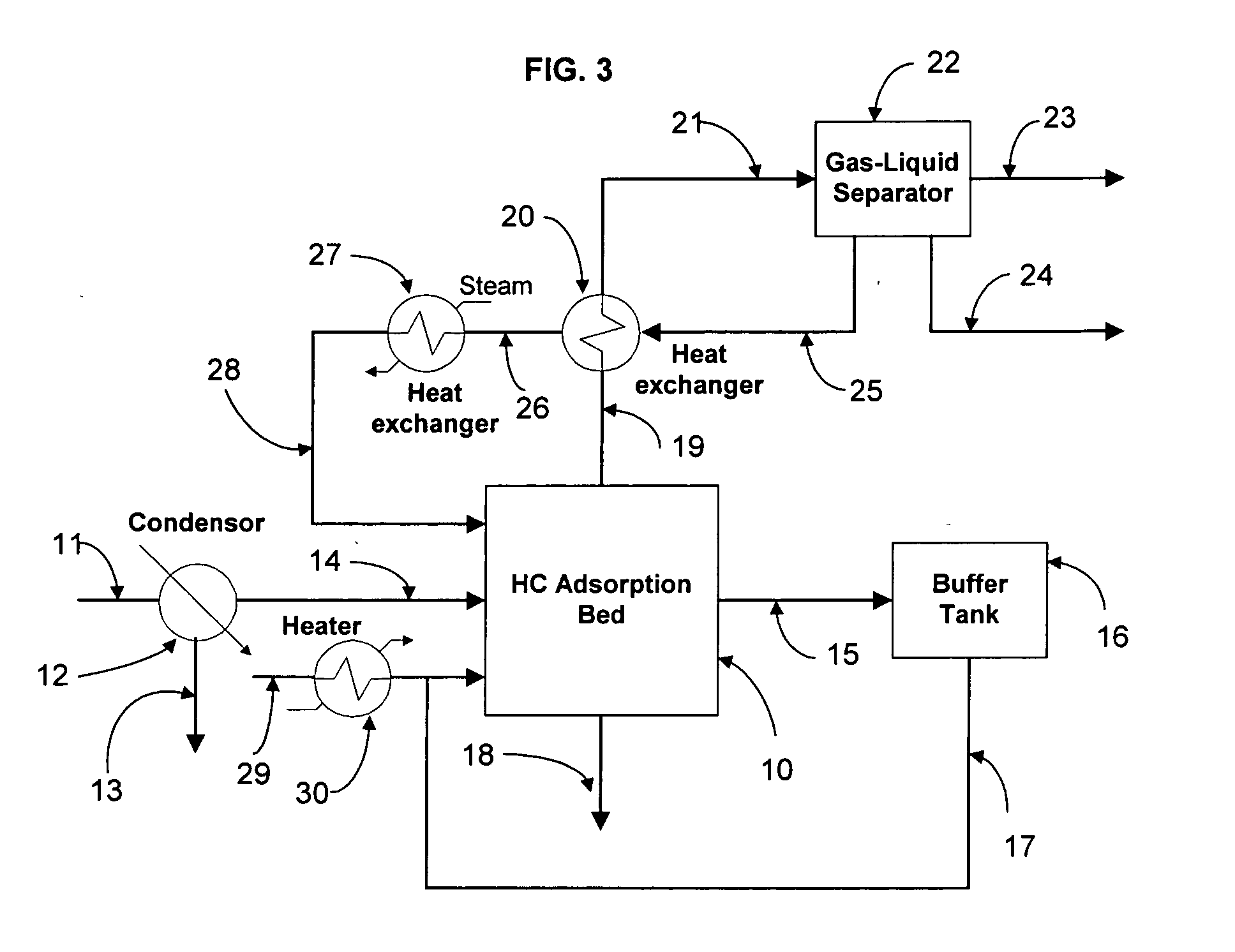Hydrocarbon separation process
a technology of hydrocarbon separation and adsorption process, which is applied in the direction of separation process, other chemical processes, instruments, etc., can solve the problems of reducing the capacity of the adsorption of hydrocarbons, low overall efficiency, and typical processes that do not make allowance for moisture contained in the gaseous effluent, etc., to achieve short cycle time, increase intrinsic safety, and reduce capital and operating expenses
- Summary
- Abstract
- Description
- Claims
- Application Information
AI Technical Summary
Benefits of technology
Problems solved by technology
Method used
Image
Examples
Embodiment Construction
[0035]FIG. 1 describes one embodiment of the invention for a short-cycle-time hydrocarbon separation process including partial heat recovery. Waste feed stream 11 is fed to condenser 12 to reduce water content of feed stream 11, and then introduced to the hydrocarbon adsorption bed 10. The hydrocarbons in the waste stream are adsorbed on the adsorbent (zeolite Y in this example) which has a high selectivity for hydrocarbons. During the adsorption, the hot lean gas 15 comprising a majority of inert gas and a small amount of water is fed to buffer tank 16.
[0036] After the adsorption step is completed, superheated steam is discharged to hydrocarbon adsorption bed 10 to desorb the hydrocarbon on the adsorbent. The process of desorption is completed in a short time. The product mixture leaving the hydrocarbon adsorption bed is composed of hydrocarbon with superheated steam including a small amount of inerts. The stream of product mixture is fed to heat exchanger 20 through line 19. At t...
PUM
| Property | Measurement | Unit |
|---|---|---|
| pressure | aaaaa | aaaaa |
| pressure | aaaaa | aaaaa |
| temperature | aaaaa | aaaaa |
Abstract
Description
Claims
Application Information
 Login to View More
Login to View More - R&D
- Intellectual Property
- Life Sciences
- Materials
- Tech Scout
- Unparalleled Data Quality
- Higher Quality Content
- 60% Fewer Hallucinations
Browse by: Latest US Patents, China's latest patents, Technical Efficacy Thesaurus, Application Domain, Technology Topic, Popular Technical Reports.
© 2025 PatSnap. All rights reserved.Legal|Privacy policy|Modern Slavery Act Transparency Statement|Sitemap|About US| Contact US: help@patsnap.com



